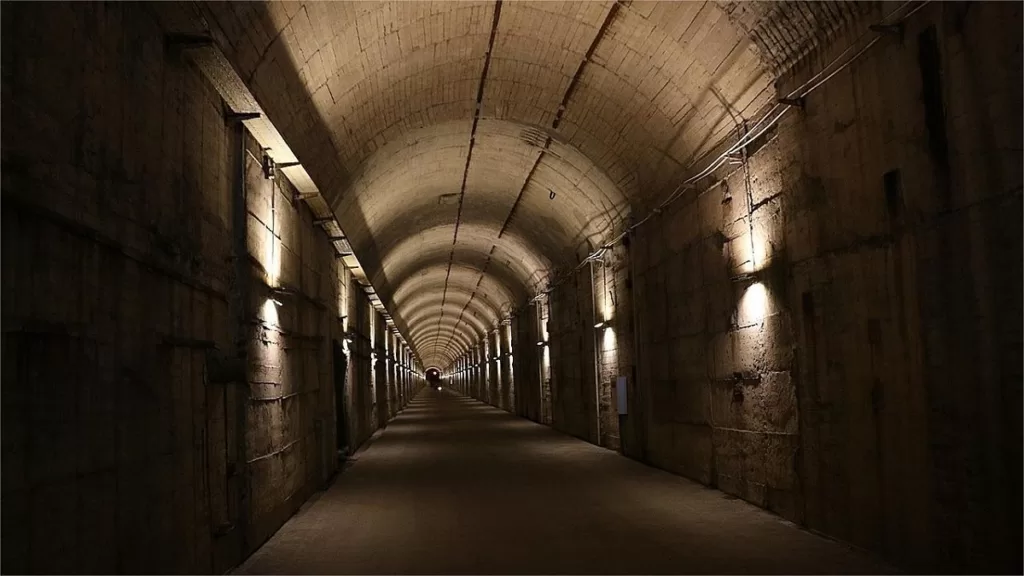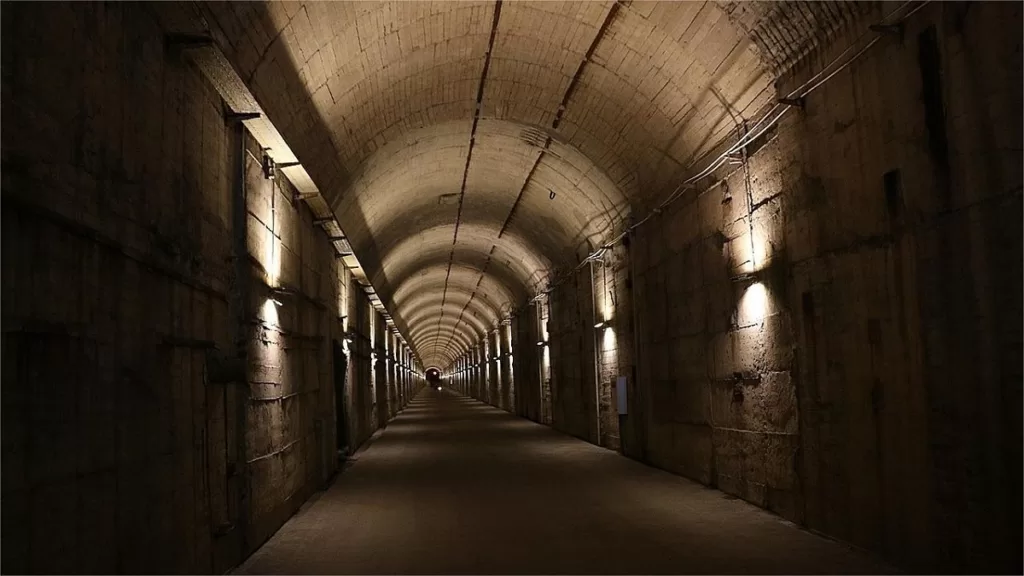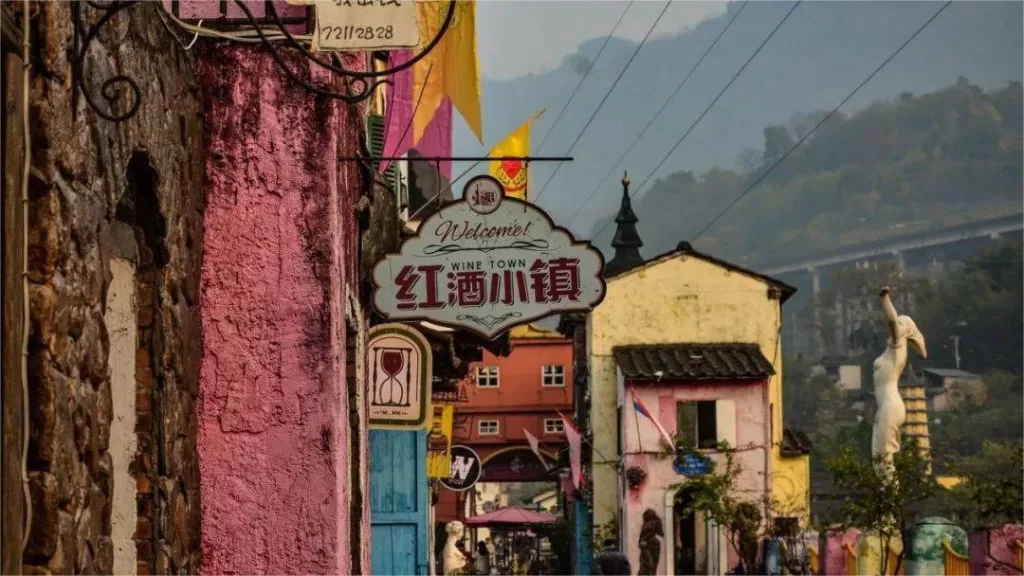Central Nuclear Militar 816 - Preço dos bilhetes, horário de abertura, transporte e destaques


The 816 Nuclear Military Plant (816地下核工程), also known as the 816 Underground Project, is a highly secretive and remarkable facility that was constructed in China. This sprawling complex, hidden deep within the mountains of Fuling, Chongqing, was approved for construction in 1966 under the leadership of the Central Military Commission and Premier Zhou Enlai. The project’s primary purpose was to establish a hidden, underground factory for the production of nuclear materials essential for atomic bombs.
The 816 Project stands as an awe-inspiring engineering feat, taking eight years to carve out the mountain and another nine years to install the necessary equipment. The total investment in this covert facility reached a staggering 7.46 billion Chinese yuan, involving the efforts of over 60,000 people over the years.
Índice
- Informações básicas
- Localização e transporte
- Statistics of the Plant
- History of the Plant
- Key Facilities
- Vlog about 816 Nuclear Military Plant
- Dicas úteis resumidas a partir de comentários
- Outras atracções no distrito de Fuling
Informações básicas
| Duração estimada da excursão | 2 - 3 horas |
| Preço do bilhete | 60 CNY (including admission and shuttle bus) |
| Horário de funcionamento | 9.00 – 17.00 (1st April – 31st October); 9.00 – 16.30 (1st November – 31st March) |
| Número de telefone | 0086-023-72779186 |
Localização e transporte
The 816 Nuclear Military Plant site, known as 816工程遗址, is located in the Bai Tao Street, Fuling District, Chongqing, China. It is situated in close proximity to the Wujiang River and nestled against the backdrop of the Wuling Mountains.
To get there, you can follow the directions:
- Head to Fuling District in Chongqing.
- Make your way to the Luo Jia Hua Yuan area (罗家花园) within Fuling District.
- Look for the bus 208 that travels from Fuling to Shanwo (山窝).
- Stay on the bus until you reach the “816地下核工程景区站台” (816 Underground Nuclear Engineering Scenic Area) bus stop.
Statistics of the Plant
The physical dimensions of the 816 Project are astonishing. Stretching over 20 kilometers longitudinally, the entire complex is concealed within the mountain, providing a climate-controlled environment with stable temperatures throughout the year. The total built-up area of the facility spans 104,000 square meters, with the main cavern towering at an impressive 79.6 meters in height and featuring an arched ceiling that spans 31.2 meters. The underground complex boasts 18 large caverns, over 130 roads, access tunnels, branching tunnels, and vertical shafts, creating a labyrinthine layout.
History of the Plant
Context
The origins of the 816 Project can be traced back to the late 1950s and early 1960s when China faced increased security concerns due to the Sino-Soviet split and the escalation of the North Bay incident. Chairman Mao Zedong voiced concerns about the concentration of China’s economic assets in large coastal cities, which made them vulnerable to potential attacks. As a result, it was decided that each province should establish its own strategic rear areas for defense.
In the 1960s, a decision was made to construct a nuclear facility in the remote southwestern hinterland of China. After extensive inspections and deliberations, the site was chosen in Baitao Town, Fuling, Chongqing. To maintain secrecy, the name “Baitao” was removed from maps.
The Birth of the 816 Project
In 1966, Premier Zhou Enlai approved the construction of the 816 Nuclear Military Plant, intended for the production of nuclear materials essential for atomic bomb production. This project was classified at the highest level of military secrecy.
The actual construction work on the 816 Project began in 1967 when the 54th Army Corps (codenamed “8342 Unit”) was tasked with the project’s execution. By 1970, the 54th Army Corps had completed its tunneling work, and the site was fully operational. Additional construction personnel, including bridge and road builders, factory workers, and laborers from Fuling District, were brought in to assist. Thousands of skilled professionals from around the country joined the project, as well as experts who were transferred from other facilities.
A Pause in Progress
In 1984, the project was officially suspended due to national strategic adjustments. At that time, the project was 85% complete in terms of construction and 65% complete in terms of equipment installation, with a total investment of 7.4 billion yuan. A small part of the 816 Project was later repurposed by the China National Nuclear Corporation and incorporated into the Jinfeng Chemical Factory for storage.
Declassification and Transformation
The 816 Project remained shrouded in secrecy until April 8, 2002, when the China National Defense Science and Industry Bureau issued Document No. 14, which allowed for the declassification of the project. Following this declassification, the 816 Project has gradually become a tourist attraction. Starting in April 2010, certain areas of the 816 Project site were opened to the public, allowing visitors to explore its hidden depths and learn about its fascinating history.
Key Facilities
The 816 Project boasts several key facilities that contribute to its awe-inspiring design and functionality:
104 Nuclear Power Plant Building: This facility, measuring 104.5 meters in length, 25 meters in width, and 31.2 meters in height, covers an area of 9,623.2 square meters. It houses two 80,000-kilowatt steam turbine generators and their auxiliary systems.
No. 9 Water Diversion Tunnel: The 9th water diversion tunnel stretches 3 kilometers and serves as the main water supply system for the entire project. With a water pipeline measuring 2,862.2 meters in length and a diameter of 3.5 meters, it has a water storage capacity of 27,000 cubic meters. This tunnel draws water directly from the Wujiang River using eight Yangjiang 48-15 water pumps, providing cooling water for the third loop of the reactor.
105 Reactor Plant and Thermal Engineering Loop Building: This building, measuring 177.6 meters in length, 20 meters in width, and 32.5 meters in height, covers an area of 15,200 square meters. It houses equipment for a single loop system, including ten evaporators, ten primary pumps, and other loop equipment.
No. 101 Work Area: No. 101 Work Area is the largest cavern within the 816 Project and houses the main reactor. It features a 12-story structure, with the core area comprising the 3rd-floor reactor pot, the 7th-floor instrument room, the 8th-floor reactor hall, and the 9th-floor central control room. This area contains a reactor using graphite as a moderator and reflector, ordinary water as a coolant, and natural uranium as fuel for controlled fission chain reactions. It featured state-of-the-art computer systems for the time.
3rd Floor Reactor Pot: The 3rd floor reactor pot is the most heavily radiated area within the project. After the project became operational, this area was sealed off entirely. Above the pot, there are 2,001 small round holes, which are slots for installing fuel rods. Correspondingly, there are 2,001 holes in the core of the reactor on the 8th floor. After neutron collisions and energy exchange within the reactor, three materials are produced: unburned uranium-238, plutonium-239, and impurities. These materials are transported through process pipes to the reactor pot and, after more than a year of cooling and decay, are transformed into finished plutonium-239.
7th Floor Instrument Room: The 7th floor instrument room primarily contains automatic potentiometers, totaling 1,034 in number, used for measuring the flow rate of process rods. In case of any malfunction, the indicator lights on the automatic potentiometers would turn red.
8th Floor Reactor Hall: At 35 meters in length and 24.8 meters in width, this hall is a crucial part of the reactor core.
9th Floor Central Control Room: This area was home to state-of-the-art computer systems that played a central role in the coordination of nuclear material production.
No. 102 Component Storage Pool: Stretching over 66 meters in length, 12 meters in width, and 12.5 meters in height, this area is used for long-term storage of components and non-working elements.
103 Reactor Ventilation Center: This facility, with a 48-meter length, 15.6-meter width, and 21.4-meter height, manages the ventilation systems of the 816 Project.
201 Chemical Post-Processing Workshop: This 169.4-meter-long, 18-meter-wide, and 29-meter-high facility is involved in the post-processing of nuclear materials.
Vlog about 816 Nuclear Military Plant
Dicas úteis resumidas a partir de comentários
Safety Awareness: The tour involves navigating through areas with dim lighting, so it’s crucial to prioritize safety. Pay attention to your surroundings, watch your step, and adhere to any safety guidelines provided by the tour operators.
Temperature Consideration: Inside the plant, the temperature tends to be cooler compared to the outside environment, typically around 10 degrees Celsius lower. Therefore, regardless of the season, it’s advisable to dress warmly. In winter, consider wearing a down jacket, while in summer, opt for long-sleeved outerwear to ensure comfort during the tour.
Cost of Amenities: The prices within the scenic area are generally reasonable. The round-trip fare for the sightseeing car is 10 yuan. Additionally, there is a cafeteria called the “Old Soldier’s Canteen” offering affordable meals such as boxed lunches for 25 yuan and noodles with mixed sauce for 15 yuan. Visitors can enjoy delicious meals without worrying about high costs.
Visitas guiadas: Consider joining guided tours provided by experienced staff familiar with the site’s history and layout. They can offer valuable insights, enhance safety measures, and ensure visitors make the most of their visit by highlighting key points of interest and answering questions.
Outras atracções no distrito de Fuling

Montanha Wuling Grande Vale do Rift

Museu subaquático de Baiheliang

Cidade do vinho tinto de Meixin
Atracções nos subúrbios de Chongqing, Atracções em Fuling District Chongqing, Locais históricos de Chongqing